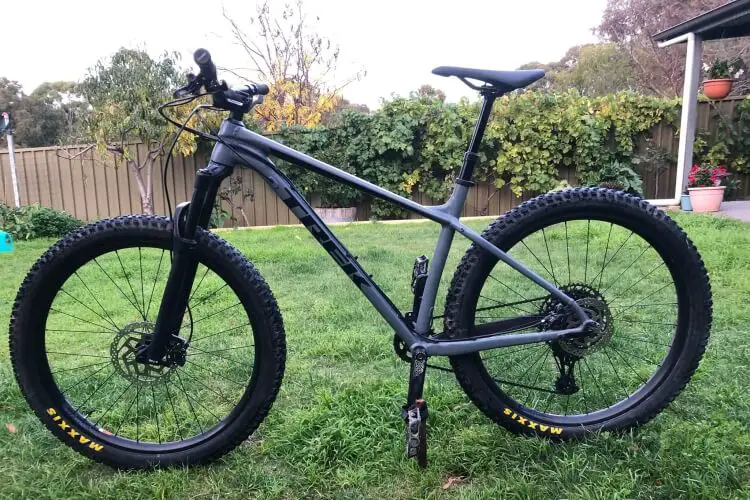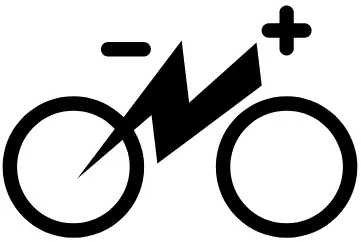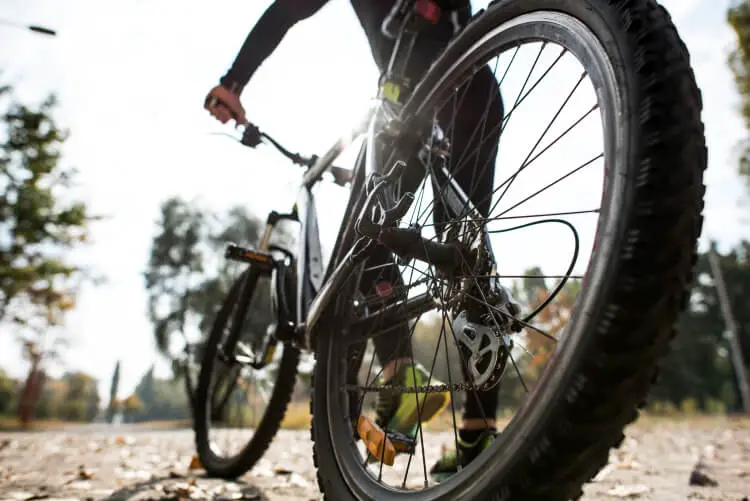There are some amazing benefits you can get from cycling, including learning about bikes and making friends with other riders. But one of the biggest reasons to ride though is keeping fit. Cycling is a great form of cardiovascular exercise, and it also helps that you get plenty of fresh air.
If you’re at the start of a fitness plan and currently heavier than you would like to be, you may be wary when looking at the different models of bikes. There is so much emphasis on streamlining bikes, that it’s reasonable to wonder whether there are bikes suitable for heavy riders.
One question you might have is if bikes have weight limits. And if bikes do have weight limits, what are they and how can you tell? And are they really that important?
So, do bicycles have weight limits? Yes, bicycles typically have a weight limit of 275-300 lbs. Companies like Zize Bikes specialize in creating bikes for heavier riders. Some Zize bikes have a weight limit of 550 lbs. Most bike limits can be found in the owner’s manual or online specifications.
We have put together a guide to give you some reassurance, and to point you in the direction of some suitable models.
Bicycles and Weight Limits

Although it would make life easier if there was one standardized weight limit for bikes, it also makes sense that there isn’t. Different models have different frame materials, different parts, and come in different sizes. With each bike being made differently, it’s logical that they have varying resistances to weight. But, this leaves us checking bikes individually for an upper weight guide. And although some brands are very clear about this information, many are not.
While the maximum rider weight of individual models varies, it does help to have a starting point. Most bikes from the leading bike brands actually have very similar top recommend weights.
We spoke to one bike manufacturer, Trek, to learn about their bike weight limits:
Trek bikes have a 275 or 300 lb weight limit depending on the bike.
Trek Bike Representative
We found this to be true with the majority of other brands. This range applies to both mountain bikes and road models. The 275 lb weight limit usually features more road bikes than mountain bikes. For example, Giant has road bikes with a 275 lb and some with a 300 lb limit. However, all of their mountain bikes reach the 300lb limit.
It would be easy to assume that the famously sturdy Fatbikes might go even higher. But, despite the oversized tires and rims, in most cases, they are the same. Specialized Fatboy, which is one of the most popular Fatbike models has a maximum weight of 275 lbs or 300 lbs, depending on which version you buy.
Most gravel bikes have a similar range too, although Cannondale’s Topstone Alloy allows for riders up to 333 lbs.
Why Do Some Bikes Have Heavier Limits?
There are still plenty of bikes with different limits, so what makes a bike more suitable for heavier riders? The make-up of the bike is key. For instance, the Cannondale Topstone Alloy model we looked at, is specified at 333 lbs. However, the carbon model of the bike is only specified to 305 lbs.
It’s not as simple as saying alloy is stronger than carbon. How metals react to stress is quite complicated and carbon can actually be stronger in some ways. However a steel or alloy frame will be heavier and more sturdy, and carbon can also be brittle under extreme pressure.
Other parts of the bike are equally important and generally, heavier riders will benefit from a high number of spokes. By having more spokes your rim is less likely to buckle under pressure. This protects not only the rims but the inner-tubes and tires as well. Thicker tires also provide stability, and if these aren’t specified on your bike they can be changed without breaking the bank.
For riders in the heavier weight range, it’s worth avoiding additional engineered parts that aren’t necessary. Folding bikes can be susceptible to breaking at the folding section of the frame (see how many recalls there have been for folding bikes breaking). For mountain bikes, the suspension frames will also supply more give than you need. You should consider looking for a rigid frame instead. The same is true of suspension forks, however, these can often be locked out, which effectively turns them off.
An area that also needs to be considered is the cargo weight. Any additional weight carried obviously increases the weight on the bike. So if you’re carrying panniers or have a full backpack for mountain biking, you need to subtract this from the rider weight. Some brands have a separate calculation for cargo as it is carried in a different way. But for the most part, a simple subtraction will get you to the figure you need.
Finding Bike’s Weight Limit

So how can you find out the weight limit for an individual bike model? Some brands like Trek make it very clear within their specifications. You can find the information quickly online. Specialized has a structural weight limit document which is a great resource. However, there is currently only the 2019 version available as of today.
Many other bike brands don’t publish this information, but there are a few steps you can take. Contacting the bike brands directly or stockist can get you results fairly quickly. We would also recommend visiting your local bike shop. They are generally very knowledgeable people with a good understanding of bike mechanics.
As frustrating as it is, for some brands, this important information seems to be forgotten about. Your best option here is to look at the bike specification and work out an estimate yourself. Or better, look for a similar model where you can find the weight limit to get a rough idea.
As there is no one standardized test that bike brands use to establish the maximum weight capacity, it’s impossible to say how brands hold up against each other. Whether a 300 lb GT limit is the same as A 300 lb Giant we can’t know for sure. It stands to reason though that brands that do publish a weight guideline are more likely to have conducted serious tests.
What Happens Above the Weight Limit?
The weight limits are guides to help you choose a bike that’s well suited to you. In reality, bikes will break below their limit and some will be fine being ridden over the limit. At the same time, you should take them seriously. The large brands spend a lot of time and resources testing bikes, and if they felt they could be ridden by larger riders, they would increase the limit.
One factor that makes a huge difference is how you ride the bike. There is a large increase in stress put on a bike once you start going at faster speeds. Riders of all weights have broken bicycles when riding hard, due to the additional impact.
For a heavier rider, the style of riding and the terrain need some consideration, especially if you’re close to the weight limit of the bike.
It isn’t just elements of the bike breaking that need consideration. Additional pressure on parts can cause them to wear out quickly which can cost you a lot of money in the long run. A well-specified bike will last much longer, require less maintenance, and be more enjoyable to ride.
Picking a Bike for Overweight Riders
We would recommend looking at specific bike brands such as Trek, Specialized, and Cannondale. It can be tempting when you see the low prices at bikes at big-box retailers, but in most cases, they are best avoided. The well-established bike brands have spent years honing bikes and testing parts. While you may pay slightly more, you will be getting a far superior bike.
While many of the large bike brands fall into the 275-300 lbs range, Cannondale bikes often have higher limits. It’s not just mountain bikes either as they have a number of road bikes specified at 330 lbs.
As well as the large brands, there are some very good smaller brands that specialize in bikes. Worksman makes very well regarded bikes that are particularly strong. The weight specification is largely in line with other brands, but these are solid heavy-duty bikes that are suited to a heavier rider.
Zize Bikes is another strong brand that focuses exclusively on larger riders. They have a useful shop by weight feature on their site with different weight brackets. The heaviest is 550 lbs, which is considerably heavier than most brands offer.
When deciding on a bike there are plenty of aspects to consider. An alloy or steel frame would be ideal. We wouldn’t rule out carbon altogether, but it wouldn’t be the first choice. While big tires help, the spokes are the first line of protection and ideally, you want to be looking at spoke count in the 30s rather than 20s.
A number of heaver riders have used puncture-resistant tires with good effect on both road and mountain bikes. With the extra pressure on the tires, puncture-resistants can help minimize those frustrating repair stops.
If you’re shopping for a mountain bike be prepared to lock out your forks frequently if you go down the suspension route. When it comes to frames, we would recommend avoiding suspension options completely.
Bikes for Overweight Riders

We spoke to Trek about which mountain bike they felt was most suitable for heavy riders. And unsurprisingly, they recommend the Roscoe. With 27.5 extra-wide types and a wide drive train, it’s a very sturdy model. While it has suspension forks these can be locked off, and there is no suspension frame. It’s a very well regarded bike and ideally suited to a heavy rider.
With an upper weight limit of 330 lbs, the CAADX is a good instruction to road cycling for a heavy rider. It has a strong alloy frame which unlike many bikes it isn’t specified solely for weight. The CAADX is somewhat rugged, suitable for roads, gravel, and even cyclocross. This makes the bike sturdy rather than quick, which matches well with someone heavy.
For riders 275 lb or under the Domane is another good road bike option. Like many budget road bikes, it is equipped with solid parts rather than light ones. The Domane is a very popular bike with excellent reviews. The combination of durability and low price make it a good choice.
Tips for Heavy Bicycle Riders
- Avoid potholes and curbs where possible when riding. While it’s not always possible to see them in advance, they can cause sudden and damaging impact on your bike.
- For comfort, prioritize the three points of rider contact on your bike (handlebars, pedals, and saddle) and make sure each one causes no discomfort.
- All tires have their own specific inflation guide. Choose the highest figure in the range to inflate. If you don’t feel enough support swap your tires with larger models.
- Choose wide handlebars to help distribute weight. These will also provide more comfort.
- For road bikes, use extra thick tape on the handlebars or apply tape in two separate layers.
- Use 32 or more spokes. They will give your rims, tires, and tubes extra protection.
- Choose a new saddle that fits. Initially, it might be a good idea to swap the model that comes with your bike for a larger one. Saddles are notoriously uncomfortable and you can always swap it back later.
- Book your bike for a regular service at your local bike shop. You will probably meet new people with a similar interest in bikes. You will also get any bike problems noticed and fixed at an early stage.
- Every rider will have bike parts that fail and rides that feel super tough. It’s all part of cycling. Give yourself credit for taking some positive steps and most of all, enjoy the ride.

